In the heart of autumn, when the leaves adopt their fiery hues and the air carries a crispness that heralds the approach of winter, the woods awaken to the primeval drama of the deer rut season. This period, marked by the stags’ majestic calls and intense activity, offers hunters an unparalleled opportunity to witness and partake in one of nature’s most enthralling spectacles.
For those with bows or rifles in hand, understanding the intricate dance of the rut is both an art and a science, crucial for transforming a regular hunting expedition into an exceptional one. With deer behavior becoming more predictable yet no less challenging to navigate, the rut season demands a blend of patience, strategy, and insight from hunters.
Whether you are venturing into the wilderness for the first time, with eyes wide and eager, or you bring years of experience and countless stories of near-misses and triumphs, mastering the unique dynamics of this season could elevate your hunting journey to new heights. ‘Deer Hunting Tips for Rut Season: Your Ultimate Guide’ aims to arm you with the essential knowledge and tactics to not just partake, but thrive, in this annual ritual of chase and opportunity.
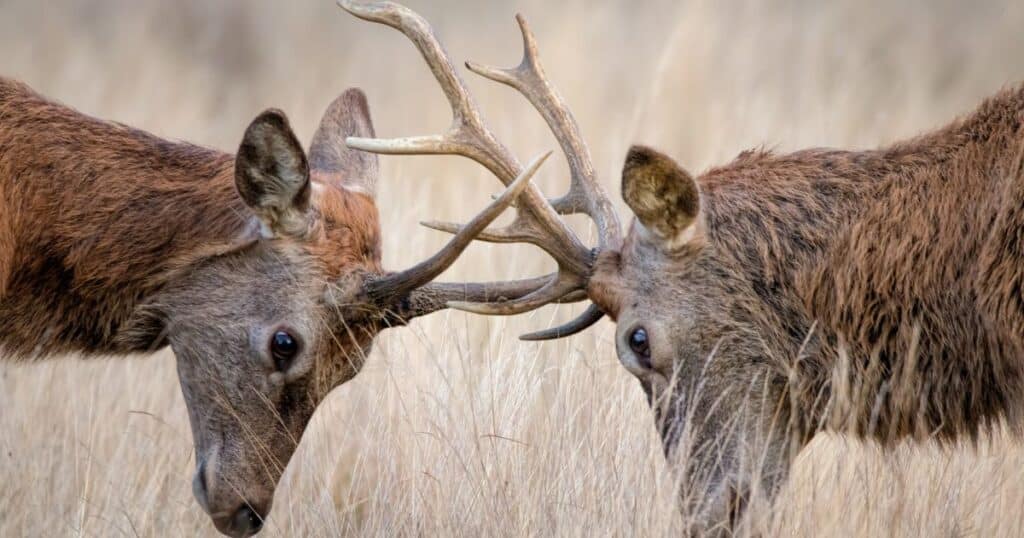
Three Phases of Rut
Pre-Rut
The pre-rut serves as the exciting opening act for the rut season, and it’s like the bucks’ way of saying, “I’m here!” They get busy rubbing trees and creating scrapes to show off and attract does. This is your signal to start paying close attention.
As autumn takes center stage, it brings a special time for whitetail deer known as the pre-rut. This phase kicks in from late September to October. During this period, both does and bucks are on a mission to eat as much as possible. They’re stocking up on fat to prepare for winter, handle pregnancies, and gear up for the upcoming mating season. It’s a crucial time in their yearly cycle, and understanding it gives you a front-row seat to the fascinating world of deer behavior.
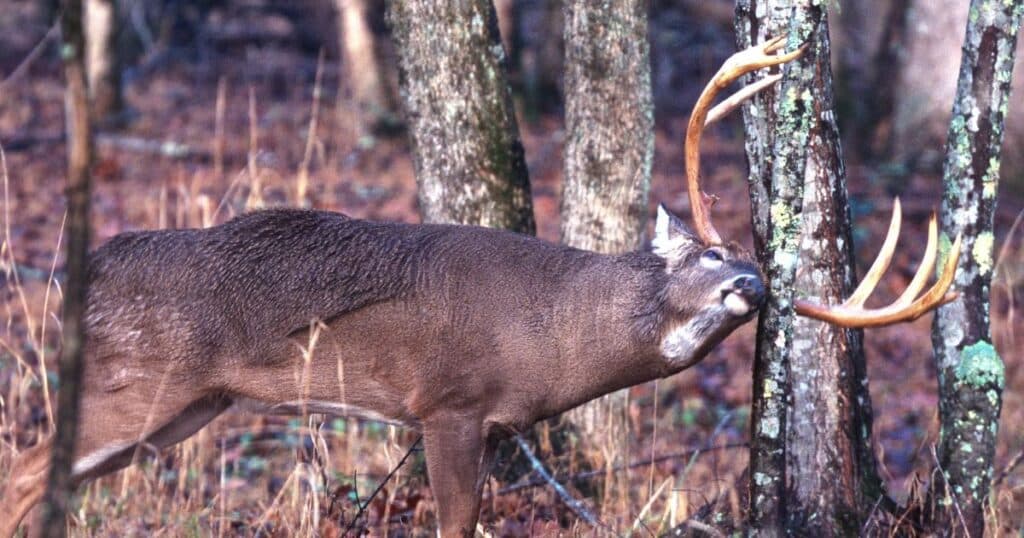
Peak Rut
Now, here’s where the excitement peaks – the peak rut. This is the moment you’ve eagerly awaited. The woods come alive with the energetic pursuit of love as bucks are on the move, ardently chasing does. They become less cautious than usual, making it the ultimate time for deer hunters. However, this is precisely when you need to be at your most strategic and attentive.
The peak rut typically spans from late October to late November. As it unfolds, mature bucks step up their game, striving to assert dominance within their territory. During this intense period, they ditch their usual daytime routines and actively roam in search of a mate. This makes them more distracted, less cautious, and considerably easier to hunt. The peak rut is marked by three primary activities: seeking, chasing, and tending.
In the seeking phase, bucks are on the prowl, actively looking for does in estrus. Chasing follows, as bucks pursue the scent of a receptive doe, often leading to spirited chases that create a dynamic and thrilling hunting experience. Tending is the final phase, where a buck stays close to a doe in estrus, attending to her and guarding against other suitors.
To make the most of this prime hunting opportunity during the peak rut, it’s crucial to understand these phases and tailor your strategies accordingly. Use scents, calls, and decoys strategically to mimic the behaviors of does and draw bucks into your hunting zone. Patience and keen observation are key during this exhilarating period, offering a unique chance to witness the captivating spectacle of nature’s mating dance.
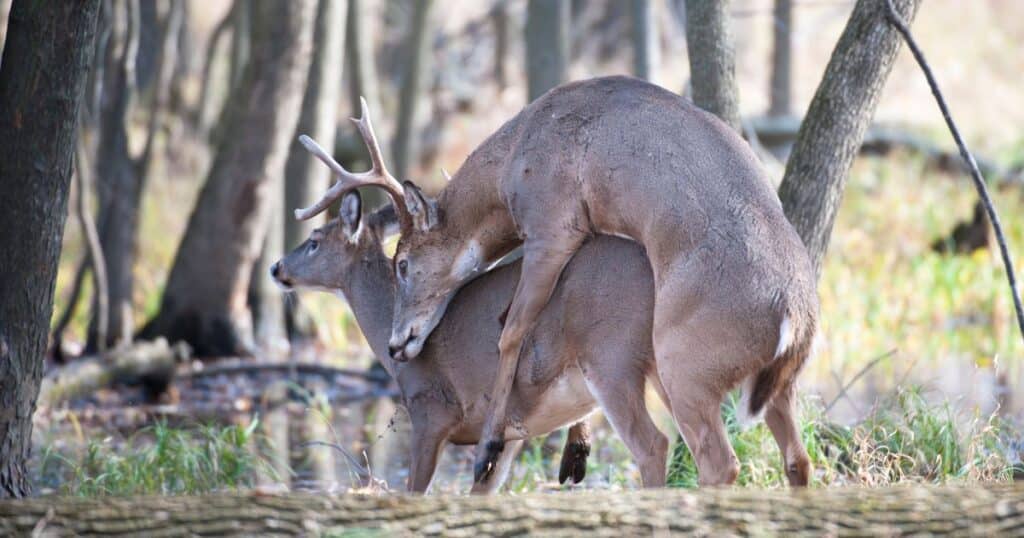
Post-Rut
Transitioning from the thrilling pre-rut and intense rut, we enter the post-rut phase, akin to the final moments at a bar before closing time. During this period, bucks are still on the lookout for any remaining estrous does, but the frenetic energy has subsided. It’s an opportune moment to target those wearied bucks still active in the area.
As we move into early December, the rut’s intensity diminishes, prompting both male and female deer to shift their focus back to finding food. This phase is critical, especially for bucks, as the rigors of the rut can lead to a significant loss—up to 20% of their body weight. Understanding this shift in behavior is key for hunters aiming to capitalize on late-season opportunities.
To enhance your chances of a successful late-season hunt, it’s crucial to be well-versed in post-rut hunting tactics. This involves adapting to the changing patterns of deer movement and adjusting your strategies accordingly. Patience becomes paramount during this phase, as deer may be more cautious and less responsive to traditional calls and lures.
Additionally, the importance of scouting cannot be overstated. Knowing the local food sources and the trails deer frequent is essential for positioning yourself strategically. Consider the changing weather conditions, as well, as they play a significant role in deer behavior during the post-rut.
Equipping yourself with insights into post-rut behaviors and implementing effective late-season hunting tactics will undoubtedly increase your odds of a rewarding hunt.
Behavioral Changes in Deer During The Rut Season
Increased Movement
During the rut, deer are mostly on the move and active during the daylight hours. This means more opportunities for sightings but also requires you to adapt your strategies to these patterns of increased activity.
Aggression in Bucks
Bucks get bold and aggressive, often throwing caution to the wind. This can work in your favor, as a once-cautious buck might now make a fatal mistake.
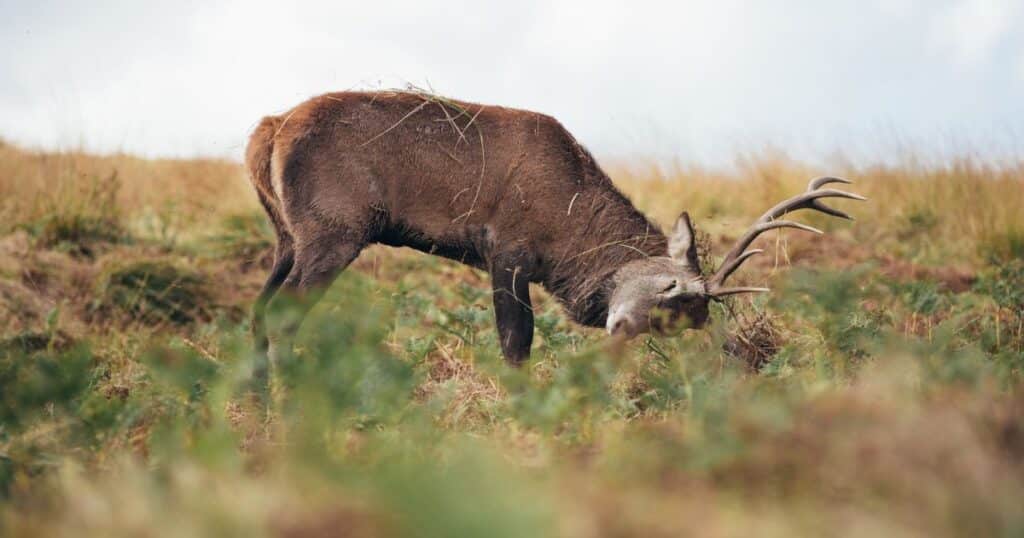
Patterns in Feeding and Bedding
Despite the chaos, deer will still need to eat and rest. Identifying these patterns can give you an edge in predicting where they’ll be.
Pre-Season Whitetail Rut Preparation
Scouting and Surveillance
Rubs and Scrapes
Keep your eyes peeled for rubs and scrapes. These are like deer graffiti, indicating where bucks are marking their territory and signaling to does.
Tracks and Trails
Deer tracks and trails can lead you to high-traffic areas. Paying attention to these can reveal a lot about deer movement in your hunting area. Place the trail cameras in the active scrapes and Keep rolling.
Understanding Deer Movement Patterns
Recognize the shift in patterns as the rut approaches. Movement increases and becomes more predictable as bucks pursue does.
Gear and Equipment Checklist
- Appropriate Firearms and Bows: Ensure your weapon of choice is tuned and ready for the field. Consider the environment when choosing optics and accessories.
- Camouflage and Scent Control: Blend into your surroundings and minimize human scent to avoid alerting deer to your presence.
- Calls and Decoys: A well-timed grunt or the strategic placement of a decoy can turn the tide. Know when and how to use them.
- Safety Gear: From harnesses for tree stand users to first aid kits, prioritize safety in all preparations.
Practice and Proficiency
Shooting Practice: Regular practice ensures you’re ready when the moment of truth arrives. Work on accuracy and shot placement under various conditions.
Bow Tuning: For archers, ensure your bow is finely tuned. From string check to arrow selection, everything should be in top condition.
Understanding Wind Direction and Thermals: Deer have keen noses. Learning to use the wind to your advantage can mean the difference between success and failure.
How To Hunt deer in Every rutting season: Deer Hunting Tips for Different Rut Phases
During Pre-Rut
- Focus on Food Sources: Bucks are bulking up for the rut, making food plots and natural feed sources hotspots for early-season action.
- Early Season Stand Locations: Set up near active trails and rub lines but be ready to adapt as the rut gears up and patterns shift.
- Using Calls and Scents Conservatively: Overplaying your hand too early can make deer wary. Use scents and calls sparingly and strategically.
Peak Rut Hunting Tactics
- Keying in on Doe Groups: Bucks will be checking doe groups frequently. Positioning yourself near these groups can provide shot opportunities.
- All-Day Sits: Maximizing your time in the field increases your chances as bucks can move at any time of the day.
- Aggressive Use of Calls and Rattles: Bucks are more responsive to calls. Mimicking the sounds of a challenger or a ready doe can bring bucks in range.
- Decoy Strategies: Using buck and doe decoys in tandem can be particularly effective as it appeals to both curiosity and territorial aggression.
Post-Rut Strategies
- Focusing on Food Sources Again: With the frenzy subsiding, bucks return to feeding patterns to recover energy, making late-season food sources prime spots once again.
- Ambush Points Near Bedding Areas: Tired bucks will seek rest close to food sources. Identify these areas for late-season success.
- Reducing Calling, Focusing on Scents: As the action winds down, subtlety becomes key. Freshen up scrape lines with scent and minimize call usage.
Hunting Strategies for Rut Season
Now that you’re prepped and ready, let’s talk strategy. Rut season requires a blend of patience, cunning, and sometimes, a bit of luck.
Stand Hunting
Location Selection
Strategically positioning yourself near bedding areas can be highly effective. Bucks are often caught off guard as they traverse between these locations, providing you with prime opportunities for a successful hunt.
Along Travel Corridors
Identify and set up along travel corridors—essentially the highways for deer. By positioning yourself along these routes, you significantly increase your chances of encountering deer as they navigate through these well-used paths.
Timing Your Hunt
Morning vs. Evening Hunts
Both morning and evening hunts offer unique advantages. Morning hunts are ideal for intercepting deer as they move back to their bedding areas after a night of foraging. On the other hand, evening hunts position you strategically to intercept deer as they head towards feeding spots, ensuring multiple opportunities for successful encounters.
Weather Considerations
Be attentive to weather conditions, as they can profoundly influence deer movement. A sudden cold snap, for instance, might trigger heightened activity among deer. Staying informed about weather forecasts allows you to anticipate and adapt to changing conditions, increasing the likelihood of a successful hunt.
Still Hunting
Moving Slowly and Quietly
The art of still hunting lies in mastering the art of stealth. Move deliberately and quietly through the terrain, pausing frequently to observe and listen. While it demands a significant amount of patience, still hunting can be exceptionally rewarding, offering opportunities for close encounters with bucks.
Utilizing Natural Cover
Leverage the natural features of the environment to enhance your concealment. Make use of foliage, trees, and any available cover to blend into the landscape seamlessly. By remaining concealed, you increase your chances of getting close to deer without alerting them to your presence.
Advanced Techniques
Calling and Rattling Tips
- Timing and intensity are crucial. Early in the rut, softer rattling can draw in curious bucks. As the rut heats up, increase intensity to mimic fierce battles.
- Don’t overdo it. A sequence of grunts followed by a period of silence can pique a buck’s interest without spooking it.
- Create or freshen mock scrapes near your stand and use scents to lure bucks in. It’s all about creating an illusion.
Decoy Placement and Use
- Place decoys in clear, visible locations where real deer would likely be found. Positioning a buck decoy to face your stand can draw a challenging buck past you for a shot.
- Adding realism: Small movements can significantly increase a decoy’s effectiveness. Consider devices or natural wind action to create movement.
- Use grunt calls to draw attention to your decoy setup. It’s a one-two punch that can be very effective.
Weather and Environmental Considerations
- Deer movement increases as temperatures drop. Pay attention to the weather forecast and plan your hunts around these shifts.
- A sudden drop in temperature can spur deer movement, especially during the pre-rut and peak rut phases.
- Deer can sense changes in barometric pressure, often becoming more active before a storm. Use this to your advantage.
- Some deer hunters swear by the moon phase, claiming it influences deer activity. While opinions vary, it’s worth considering in your planning.
- Light rain can be your friend, dampening noise and encouraging deer to move. Too much, however, can have the opposite effect.
Moon Phase and Hunting
Best Times to Hunt
Deer are more active at dawn and dusk, but moon phases can alter this behavior. Pay attention to the lunar calendar for peak activity times.
Lunar Impact on Deer Movement
Some hunters swear by the moon’s impact on deer movement. While opinions vary, it’s another tool in your hunting arsenal.
Stealth and Detection Avoidance
Scent Control Techniques
- Clothing Management: Wash hunting clothes in scent-free detergent and store them in airtight containers to minimize human odors.
- Use of Scent-Eliminating Products: Sprays, wipes, and even ozone-generating devices can help mask your scent in the field.
- Wind Direction Awareness: Always play the wind, positioning yourself downwind of expected deer paths to avoid detection.
Silent Approach and Stand Entry
- Noise Reduction Gear: Use gear designed to minimize noise, from soft-closure bags to silent fabric for clothing.
- Optimizing Entry and Exit Routes: Plan your approach and departure to minimize disturbance, using natural cover and timing to your advantage.
- Timing Movements with Environmental Noise: Use the natural sounds of the environment, like gusts of wind or passing airplanes, to cover any accidental noise you might make.
Ethical and Safe Hunting Practices
Shot Placement and Tracking
Precision in aiming is crucial for humane kills. Invest time in studying deer anatomy to hone your shooting skills effectively for better understanding of where to shoot a deer. Equally vital is the skill of tracking post-shot, ensuring ethical hunting practices by maximizing the chances of recovering every hit animal. While every effort should be made to recover the deer, recognizing when to call off a track is an essential aspect of ethical hunting, highlighting the importance of knowing not just how to track but also when to exercise restraint.
Hunter Safety
Prioritize safety in your hunting endeavors by consistently utilizing a safety harness. Conduct a thorough equipment check before the season kicks off to ensure everything is in optimal condition. Maintain a commitment to safe handling practices, keeping firearms pointed in a secure direction and loading them only when you are prepared to use them. While the choice between hunting alone or with a companion holds its own merits, it is imperative to inform someone of your whereabouts and expected return time. This simple yet crucial precaution adds an extra layer of safety to your hunting experience.
Respect for Wildlife and Habitat
Leaving no trace in the wilderness is a fundamental ethic that ensures the pristine beauty of natural environments for all to enjoy while minimizing the impact on wildlife. Responsible handling of harvested deer goes hand in hand with this principle, emphasizing respect from field dressing to transport and encouraging the efficient use of every part of the animal.
By adopting these practices, hunters not only demonstrate ethical conduct but also contribute to the broader goal of conservation. Actively involving oneself in conservation efforts, such as participating in local habitat projects or joining groups dedicated to maintaining healthy deer populations and ecosystems, further underscores a commitment to preserving the delicate balance of nature. In doing so, hunters become stewards of the environment, promoting sustainable practices that benefit both wildlife and the generations of outdoor enthusiasts to come.
Post-Hunt Activities
Processing and Butchering
Engaging in post-hunt activities involves various essential steps to ensure that the harvested deer is utilized efficiently. One crucial aspect is processing and butchering, where quick and effective field dressing techniques are employed to preserve meat quality and simplify transport. Skinning and quartering the deer further contribute to making the most out of the harvest.
Another important consideration is aging and meat preparation. Learning the proper techniques for aging venison can significantly enhance its flavor and tenderness, contributing to a better culinary experience. Taking the time to understand these processes ensures that the meat is prepared in the best possible way.
Mounting and Trophy Care
In terms of mounting and trophy care, hunters must decide on the type of mount they prefer, whether it’s a full mount, shoulder mount, or European skull. Proper field care of trophies is crucial to preserving their quality, and knowing what to do in the field ensures optimal results. For a hands-on approach, individuals can also learn how to create their own European mounts, providing a rewarding way to display their hunting success.
Sharing the Bounty
Sharing the bounty with the community is a noble practice, and hunters can donate venison to local food banks through programs that welcome such contributions. Additionally, celebrating a successful hunting season with friends and family can be done by hosting a venison barbecue, allowing everyone to enjoy the fruits of the labor. Exploring various venison recipes, from classic roasts to innovative dishes, adds a fun and rewarding aspect to cooking with game meat
Mastering the Rut: Keys to a Successful Deer Hunting Season
In conclusion, successful deer hunting during the rut season is the culmination of understanding deer behavior through the phases of the rut, meticulous preparation, and strategic execution in the field. From recognizing the early signs of the pre-rut phase to capitalizing on the peak and post-rut phases, hunters need to adapt their strategies to the changing dynamics of deer activity.
Key behaviors such as increased movement, aggression, and altered feeding and bedding patterns provide essential hints for hunters aiming to maximize their chances. Preparation extends beyond knowing the deer’s behavior; it involves scouting for signs, choosing the right equipment, and employing effective camouflage and scent control techniques.
Whether you prefer stand hunting, still hunting, employing calls and rattles, or deploying decoys, the approach should be guided by an intimate understanding of the terrain, deer habits, and the subtle nuances of the season. Strategic hunting during the rut necessitates a blend of patience, adaptability, and a profound respect for wildlife and ethical hunting practices. The use of advanced strategies like creating mock scrapes, understanding the impact of moon phases, and leveraging weather conditions can significantly enhance chances of success.
However, success is not just measured by the harvest but by the adherence to safety and ethics, ensuring a respectful relationship with nature and wildlife. Remember, each deer hunting experience is a learning opportunity. Maintaining a hunting journal can help refine tactics over time, while post-hunt considerations like field dressing, processing, and possibly donating or mounting the harvest, complete the hunter’s journey with respect and responsibility.
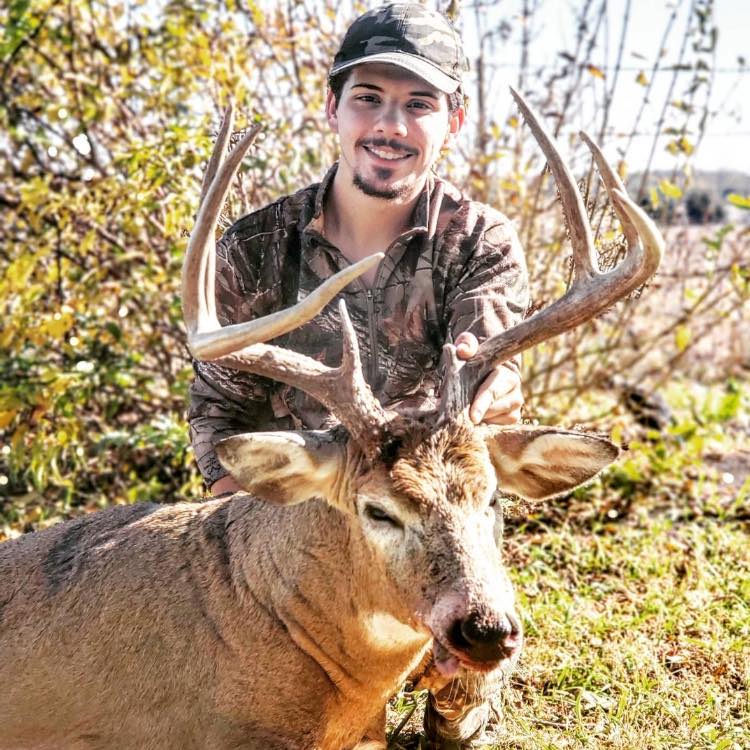
About The Author:
Lake Streeter, A Gun enthusiast, and loves to hunt in the middle of the wood. Always check the latest hunting gears out in the market and try to share his honest opinion with the audience in Hunting Nook.
